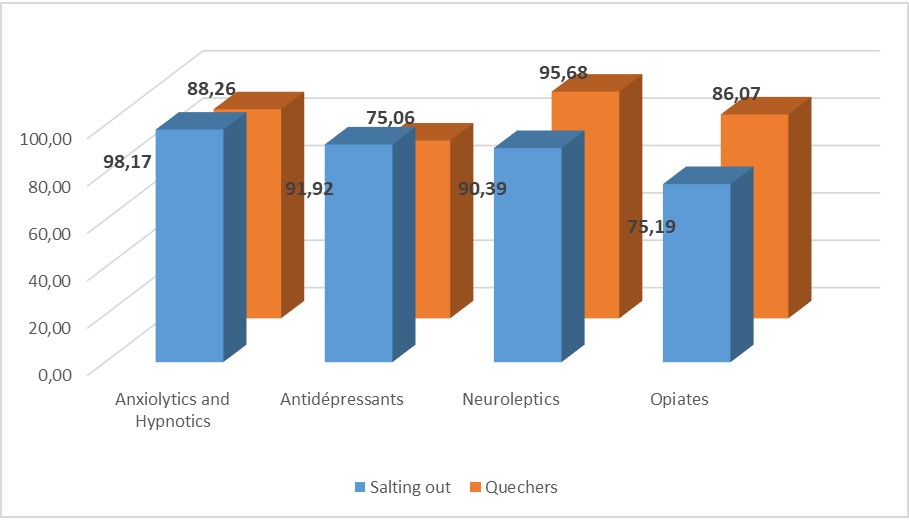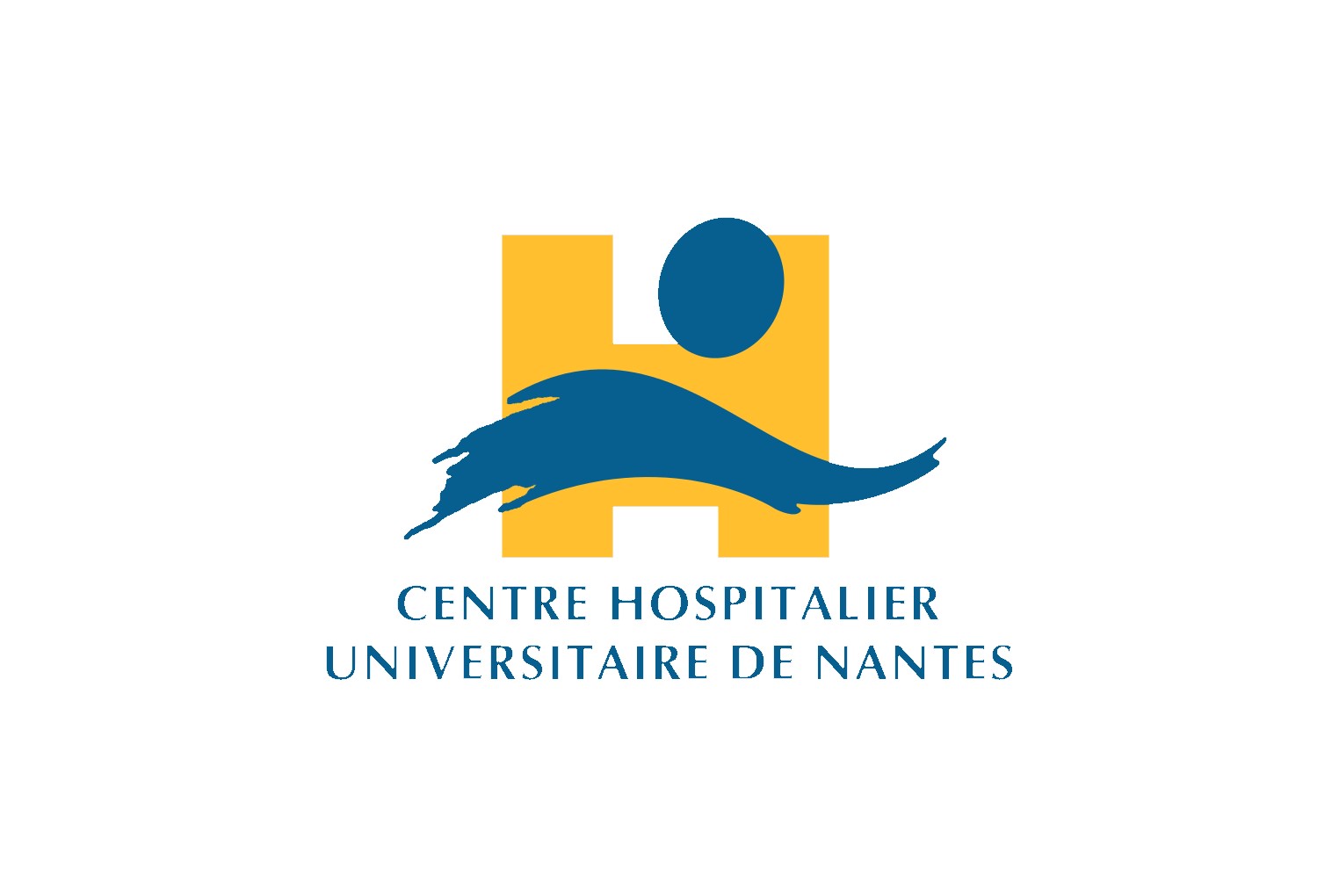|
Introduction
I made my internship in the Nantes University Hospital Toxicology Laboratory. This Laboratory receives samples from hospital and forensic cases wherein drug concentrations are lower than current different methods can detect. Internship objective was to find a unique method to analyze psychotropic drugs at very low concentrations. The identification of psychoactive compounds was compared thanks to three sample preparations.
Experimental conditions
The analysis is based on a Liquid Chromatography coupled Mass Spectrometry tandem method (LC-MS/MS). Blood samples are prepared with two methods : Salting out and Quechers. Quechers is the acronym of Quick, Easy, Cheap, Effective, Rugged and Safe. The difference between the methods is the extraction salt, ammonium acetate for Salting out and magnesium sulfate for Quechers.
Salts are added to 100 µl of blood sample after deproteinisate with 400µL of Acetonitrile. To salt out, 50µL of ammonium acetate at a concentration of 10M is added. To perform the Quechers method, around 40 mg of salt is added. To concentrate samples, supernatants are evaporated to dryness then dissolved in chromatographic mobile phase.
The study was realized by spiking blood samples at 2 concentration : 10 and 100 ng/mL.
Use of different extraction types induced variations in extraction yields between therapeutical families.
Results
Extraction yields were obtained by comparing results with extraction and without extraction considered as 100%. The extraction results were expressed according to the therapeutical families. The figure shows the family medium extraction yield of the various methods. The medium yield is the medium of total results of the molecules in the family. The value of extractions to normal yield is considered between 60 and 120 percent. According to the results, Quechers and Salting out had similar results, except for Antidepressants and Opiates. Each of them is better extracted with a various method.
Conclusion
The two methods displayed satisfactory exctraction yields for the four families of psychotropic drugs : > 70%.
The comparison did not show that one method extracts the drugs better than the other.
The two methods showed efficient extractions. The Quechers method was chosen because of less matrix effects than with salting out. This method proved to be a quick and efficient alternative to salting out extraction to identify a wide range of psychotropic drugs.
|
|

Comparison of extraction yields between sample préparations methods, in function of therapeutical families
These results was obtained with the same conditions in blood samples.
|



